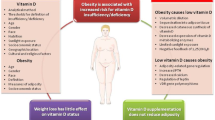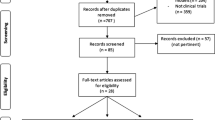Abstract
Accumulating evidence has demonstrated that serum uric acid (UA), a natural powerful antioxidant, plays a beneficial role in bone health in the general population. However, few reports are available on the association between serum UA and bone in patients with type 2 diabetes mellitus (T2DM). We therefore investigated whether the benefit of serum UA for bone health was still present in those patients. 626 males and 609 postmenopausal females with T2DM were enrolled in this cross-sectional study. Serum UA concentrations and bone mineral density (BMD) measured at lumbar spine, femoral neck and total hip by dual-energy X-ray absorptiometry were obtained from all subjects. Meanwhile, data on osteoporosis prevalence, glucose metabolism, bone turnover markers and other serum biochemical indexes were collected. After adjustment for potential confounders, the results suggested that serum UA was positively associated with BMD in patients with normal weight, but this positive association varied by gender and skeletal sites in overweight T2DM patients [body mass index (BMI) ≥ 25 kg/m2]. Moreover, significantly lower odds ratios (ORs) for osteoporosis were found in postmenopausal patients with the highest UA tertile and male patients with medium UA tertile [adjusted OR 0.315, 95% confidence interval (CI) 0.170–0.581 for postmenopausal patients; adjusted OR 0.464, 95% CI 0.225–0.955 for male patients]. The positive association between serum UA and BMD found in Chinese T2DM patients may imply that relatively high UA is a protective factor for bone in these patients. Large intervention studies are needed to further confirm the outcomes and provide possible explanations.



Similar content being viewed by others
References
Ahn SH, Lee SH, Kim BJ, Lim KH, Bae SJ, Kim EH, Kim HK, Choe JW, Koh JM, Kim GS (2013) Higher serum uric acid is associated with higher bone mass, lower bone turnover, and lower prevalence of vertebral fracture in healthy postmenopausal women. Osteoporos Int 24:2961–2970
Nabipour I, Sambrook PN, Blyth FM, Janu MR, Waite LM, Naganathan V, Handelsman DJ, Le Couteur DG, Cumming RG, Seibel MJ (2011) Serum uric acid is associated with bone health in older men: a cross-sectional population-based study. J Bone Miner Res 26:955–964
Lin X, Zhao C, Qin A, Hong D, Liu W, Huang K, Mo J, Yu H, Wu S, Fan S (2015) Association between serum uric acid and bone health in general population: a large and multicentre study. Oncotarget 6:35395–35403
Lane NE, Parimi N, Lui LY, Wise BL, Yao W, Lay YA, Cawthon PM, Orwoll E (2014) Association of serum uric acid and incident nonspine fractures in elderly men: the osteoporotic fractures in men (MrOS) study. J Bone Miner Res 29:1701–1707
Ishii S, Miyao M, Mizuno Y, Tanaka-Ishikawa M, Akishita M, Ouchi Y (2014) Association between serum uric acid and lumbar spine bone mineral density in peri- and postmenopausal Japanese women. Osteoporos Int 25:1099–1105
Dong XW, Tian HY, He J, Wang C, Qiu R, Chen YM (2016) Elevated serum uric acid is associated with greater bone mineral density and skeletal muscle mass in middle-aged and older adults. PLoS One 11:e0154692
Sritara C, Ongphiphadhanakul B, Chailurkit L, Yamwong S, Ratanachaiwong W, Sritara P (2013) Serum uric acid levels in relation to bone-related phenotypes in men and women. J Clin Densitom 16:336–340
Kim BJ, Baek S, Ahn SH, Kim SH, Jo MW, Bae SJ, Kim HK, Choe J, Park GM, Kim YH, Lee SH, Kim GS, Koh JM (2014) Higher serum uric acid as a protective factor against incident osteoporotic fractures in Korean men: a longitudinal study using the National Claim Registry. Osteoporos Int 25:1837–1844
Veronese N, Carraro S, Bano G, Trevisan C, Solmi M, Luchini C, Manzato E, Caccialanza R, Sergi G, Nicetto D, Cereda E (2016) Hyperuricemia protects against low bone mineral density, osteoporosis and fractures: a systematic review and meta-analysis. Eur J Clin Invest 46:920–930
Schroder K (2015) NADPH oxidases in bone homeostasis and osteoporosis. Cell Mol Life Sci 72:25–38
Almeida M, O’Brien CA (2013) Basic biology of skeletal aging: role of stress response pathways. J Gerontol A Biol Sci Med Sci 68:1197–1208
Almeida M (2012) Aging mechanisms in bone. Bonekey Rep 1
Maggio D, Barabani M, Pierandrei M, Polidori MC, Catani M, Mecocci P, Senin U, Pacifici R, Cherubini A (2003) Marked decrease in plasma antioxidants in aged osteoporotic women: results of a cross-sectional study. J Clin Endocrinol Metab 88:1523–1527
Kanbay M, Jensen T, Solak Y, Le M, Roncal-Jimenez C, Rivard C, Lanaspa MA, Nakagawa T, Johnson RJ (2016) Uric acid in metabolic syndrome: from an innocent bystander to a central player. Eur J Intern Med 29:3–8
Krishnan E, Pandya BJ, Chung L, Hariri A, Dabbous O (2012) Hyperuricemia in young adults and risk of insulin resistance, prediabetes, and diabetes: a 15-year follow-up study. Am J Epidemiol 176:108–116
Johnson RJ, Nakagawa T, Sanchez-Lozada LG, Shafiu M, Sundaram S, Le M, Ishimoto T, Sautin YY, Lanaspa MA (2013) Sugar, uric acid, and the etiology of diabetes and obesity. Diabetes 62:3307–3315
Baldwin W, McRae S, Marek G, Wymer D, Pannu V, Baylis C, Johnson RJ, Sautin YY (2011) Hyperuricemia as a mediator of the proinflammatory endocrine imbalance in the adipose tissue in a murine model of the metabolic syndrome. Diabetes 60:1258–1269
Lima WG, Martins-Santos ME, Chaves VE (2015) Uric acid as a modulator of glucose and lipid metabolism. Biochimie 116:17–23
Yamagishi S, Nakamura K, Inoue H (2005) Possible participation of advanced glycation end products in the pathogenesis of osteoporosis in diabetic patients. Med Hypotheses 65:1013–1015
Raskin P, Stevenson MR, Barilla DE, Pak CY (1978) The hypercalciuria of diabetes mellitus: its amelioration with insulin. Clin Endocrinol (Oxf) 9:329–335
Paul RG, Bailey AJ (1996) Glycation of collagen: the basis of its central role in the late complications of ageing and diabetes. Int J Biochem Cell Biol 28:1297–1310
Gregorio F, Cristallini S, Santeusanio F, Filipponi P, Fumelli P (1994) Osteopenia associated with non-insulin-dependent diabetes mellitus: what are the causes? Diabetes Res Clin Pract 23:43–54
Alikhani M, Alikhani Z, Boyd C, MacLellan CM, Raptis M, Liu R, Pischon N, Trackman PC, Gerstenfeld L, Graves DT (2007) Advanced glycation end products stimulate osteoblast apoptosis via the MAP kinase and cytosolic apoptotic pathways. Bone 40:345–353
Levey AS, Stevens LA, Schmid CH, Zhang YL, Castro AF 3rd, Feldman HI, Kusek JW, Eggers P, Van Lente F, Greene T, Coresh J (2009) A new equation to estimate glomerular filtration rate. Ann Intern Med 150:604–612
Hayes Andrew F (2013) Introduction to mediation, moderation, and conditional process analysis: a regression-based approach. Guilford Press, New York
Zhao DD, Jiao PL, Yu JJ, Wang XJ, Zhao L, Xuan Y, Sun LH, Tao B, Wang WQ, Ning G, Liu JM, Zhao HY (2016) Higher serum uric acid is associated with higher bone mineral density in chinese men with type 2 diabetes mellitus. Int J Endocrinol 2016:2528956
Dytfeld J, Ignaszak-Szczepaniak M, Gowin E, Michalak M, Horst-Sikorska W (2011) Influence of lean and fat mass on bone mineral density (BMD) in postmenopausal women with osteoporosis. Arch Gerontol Geriatr 53:e237–e242
Kim YJ, Ku SY, Jee BC, Suh CS, Kim SH, Choi YM, Kim JG, Moon SY (2010) Effects of adding luteinizing hormone activity to gonadotropin releasing hormone antagonist protocols may differ according to age. Gynecol Endocrinol 26:256–260
Bonora E, Targher G, Zenere MB, Saggiani F, Cacciatori V, Tosi F, Travia D, Zenti MG, Branzi P, Santi L, Muggeo M (1996) Relationship of uric acid concentration to cardiovascular risk factors in young men. Role of obesity and central fat distribution. The Verona young men atherosclerosis risk factors study. Int J Obes Relat Metab Disord 20:975–980
Loenen HM, Eshuis H, Lowik MR, Schouten EG, Hulshof KF, Odink J, Kok FJ (1990) Serum uric acid correlates in elderly men and women with special reference to body composition and dietary intake (Dutch nutrition surveillance system). J Clin Epidemiol 43:1297–1303
Dehghan A, van Hoek M, Sijbrands EJ, Hofman A, Witteman JC (2008) High serum uric acid as a novel risk factor for type 2 diabetes. Diabetes Care 31:361–362
Nakanishi N, Okamoto M, Yoshida H, Matsuo Y, Suzuki K, Tatara K (2003) Serum uric acid and risk for development of hypertension and impaired fasting glucose or Type II diabetes in Japanese male office workers. Eur J Epidemiol 18:523–530
Herman JB, Goldbourt U (1982) Uric acid and diabetes: observations in a population study. Lancet 2:240–243
Zhu Y, Hu Y, Huang T, Zhang Y, Li Z, Luo C, Luo Y, Yuan H, Hisatome I, Yamamoto T, Cheng J (2014) High uric acid directly inhibits insulin signalling and induces insulin resistance. Biochem Biophys Res Commun 447:707–714
Takir M, Kostek O, Ozkok A, Elcioglu OC, Bakan A, Erek A, Mutlu HH, Telci O, Semerci A, Odabas AR, Afsar B, Smits G, Lanaspa AM, Sharma S, Johnson RJ, Kanbay M (2015) Lowering uric acid with allopurinol improves insulin resistance and systemic inflammation in asymptomatic hyperuricemia. J Investig Med 63:924–929
Butler R, Morris AD, Belch JJ, Hill A, Struthers AD (2000) Allopurinol normalizes endothelial dysfunction in type 2 diabetics with mild hypertension. Hypertension 35:746–751
Makovey J, Macara M, Chen JS, Hayward CS, March L, Seibel MJ, Sambrook PN (2013) Serum uric acid plays a protective role for bone loss in peri- and postmenopausal women: a longitudinal study. Bone 52:400–406
Felson DT, Zhang Y, Hannan MT, Anderson JJ (1993) Effects of weight and body mass index on bone mineral density in men and women: the Framingham study. J Bone Miner Res 8:567–573
Riggs BL, Melton LJ 3rd, Robb RA, Camp JJ, Atkinson EJ, Peterson JM, Rouleau PA, McCollough CH, Bouxsein ML, Khosla S (2004) Population-based study of age and sex differences in bone volumetric density, size, geometry, and structure at different skeletal sites. J Bone Miner Res 19:1945–1954
Abrahamsen B, Stilgren LS, Hermann AP, Tofteng CL, Barenholdt O, Vestergaard P, Brot C, Nielsen SP (2001) Discordance between changes in bone mineral density measured at different skeletal sites in perimenopausal women–implications for assessment of bone loss and response to therapy: the Danish Osteoporosis Prevention Study. J Bone Miner Res 16:1212–1219
Wu ZQ, Zhang Y, Xie E, Song WJ, Yang RX, Yan CJ, Zhang BF, Xu HG (2016) High uric acid (UA) negatively affects serum tartrate-resistant acid phosphatase 5b (TRACP 5b) immunoassay. PLoS One 11:e0147554
Wang HH, Xiang GD (2015) Changes of plasma concentration of osteoprotegerin and its association with endothelial dysfunction before and after hypouricemic therapy in patients with hyperuricemia. Mod Rheumatol 25:123–127
Li HZ, Chen Z, Hou CL, Tang YX, Wang F, Fu QG (2015) Uric acid promotes osteogenic differentiation and inhibits adipogenic differentiation of human bone mesenchymal stem cells. J Biochem Mol Toxicol 29:382–387
Acknowledgements
This study was supported by Shanghai Municipal Natural Science Foundation (13ZR1432100), National High Technology Research and Development Program (2013AA032203) and National Natural Science Foundation of China (NSFC 81500650).
Author information
Authors and Affiliations
Corresponding author
Ethics declarations
Conflict of interest
The author(s) declare that they have no competing interests.
Electronic supplementary material
Below is the link to the electronic supplementary material.
About this article
Cite this article
Xu, M., Su, J., Hao, J. et al. Positive association between serum uric acid and bone mineral density in Chinese type 2 diabetes mellitus stratified by gender and BMI. J Bone Miner Metab 36, 609–619 (2018). https://doi.org/10.1007/s00774-017-0877-9
Received:
Accepted:
Published:
Issue Date:
DOI: https://doi.org/10.1007/s00774-017-0877-9




